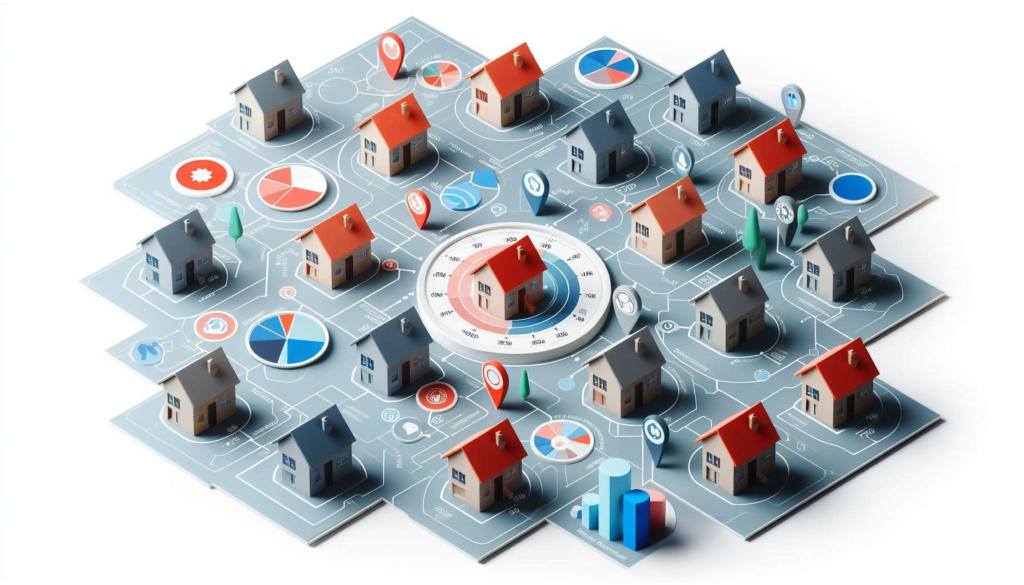- Positioning identifies where you fit in the marketplace.
- Developing your positioning is integral to your business.
- Surveys and segmentation profiles help to create positioning.
Over my career, I have spoken to thousands of entrepreneurs of all stripes and abilities. From the outset, I have been consistently surprised by those who lack a clear understanding of positioning. If a business owner or manager doesn’t know who their customer is or where their “sweet spot” in the market lies, it’s usually a good indicator that the business is unlikely to succeed. The most basic positioning consists of answers to three questions:
- Who is my customer?
- Who is my competition?
- What is my primary market area?
From Guesswork to Data-Driven Targeting
Today’s technological marketplace offers more opportunities to achieve precise positioning than ever before. There was a time when there were not many alternatives to educated guesses. I could ask a business owner who they thought their customer was, and we would aim at the profile with every targeting tool I had available. Unfortunately, there were only a small number of options. Until the mid-to-late 1990s, most advertising was targeted at a mass audience or large segments of a mass audience.

The Wrong Answers That Hurt Your Business
I still get terrible answers to my positioning questions. Me: “Who is your customer?” Prospect: “Everyone!” No company ever had a target market of “everyone.” There is a specific group or groups of people who are more likely to buy your product or service. The best indicator you have is who has bought from you previously. Who are the people who are your best customers? By and large, these people and others who look like them provide your best chance at success.
Sometimes, I get this: “Me: “Who are your top competitors?” Prospect: “Walmart.” You probably aren’t competing with Walmart unless you are Target or Amazon. Unless you somehow stumbled upon supply chain efficiencies beyond what most of the market has available for many of Walmart’s best-selling items, it’s more likely that another business that fits the same footprint you do is your true competitor.
Finding Your True Market Position
So, what is the easiest way to determine your market positioning? It takes objectivity and sober reflection to determine where you fit. It’s easy to delude yourself, so it helps if you get input from friends, family, and, most importantly, your customers. Take an honest look at the marketplace and determine where in the event, your usual customers don’t buy from you, they will buy.
One way to gain insight is to use your website to capture survey responses. Invite all your customers to a simple survey and offer a coupon in return. Use a simple platform like SurveyMonkey or Jotform. The information you get will be invaluable in determining who your customers and competitors are.

The Bulletproof Way to Identify Your Ideal Customers
Now, let’s talk about the best, bulletproof way to get the information you need to market effectively to the market segment most likely to buy from you. The more advanced positioning activity will make clear who your customers are and where to find them. I’ve done this for hundreds of customers, and it always works. It tends to be more expensive upfront. Still, it will create tremendous savings over time because it eliminates waste from marketing and advertising activities while generating more and higher-quality leads.
Using Your Data for Targeted Marketing
If you have a CRM, point-of-sale software, or simply paper files, you can prepare lists of your best customers by using their names and addresses. You need to output the data from your digital platforms in CSV format, and paper-based information must be entered into a simple spreadsheet, such as Excel so that we can obtain a clean file in CSV format. That information can then be transmitted to a service like Data Axle or ESRI Tapestry to get detailed profiles of the demographic groups in your market area.
Eliminating Waste with Look-Alike Marketing
In other words, if you know that your best customers historically tend to be age 45+, with $100,000 plus in household income and 1+ child in the home, why wouldn’t you advertise primarily to that group? You can eliminate the waste of reaching out to people who are less likely to buy by creating lists of customers who resemble those who have purchased from you previously. We’re looking for dopplegangers of your existing customers. The reports often provide multiple profiles of the percentages they bought from you. Your marketing activities should reflect these percentages in terms of who and how frequently you message prospects for your business.

There are many moving parts here, and you will need to research which service offers the best report for your budget and needs. I first used market segmentation in 1997. It was a complete game-changer. Spending your money where it’s most likely to get a return is the highest form of marketing.
Positioning done correctly saves money, focuses your marketing efforts, and delivers a return on investment. If you have not officially researched your positioning in the marketplace and documented those results in writing, so that everyone in your organization can recite your basic positioning details, do it now. If you find that customers do not share the same opinion on your positioning as you do, it’s time for more effective communication in your marketing. Positioning will provide the roadmap of where you need to go and what you need to do to get more revenue.
How do I find more customers to buy from me?
Most businesses today have some digital information capture for customer information. Whether you use a CRM or a point-of-sale system, if you have a list of all the customers who bought from you with their address information, you can easily create a customer profile list. Using that list, data companies can profile your market area to find other individuals who fit the same demographic profiles as your best customers.
Why are segmentation profiles useful?
Finding other people who are in the demographic range as your best customers will help eliminate the waste of reaching out to people who are unlikely to buy your product or service.











